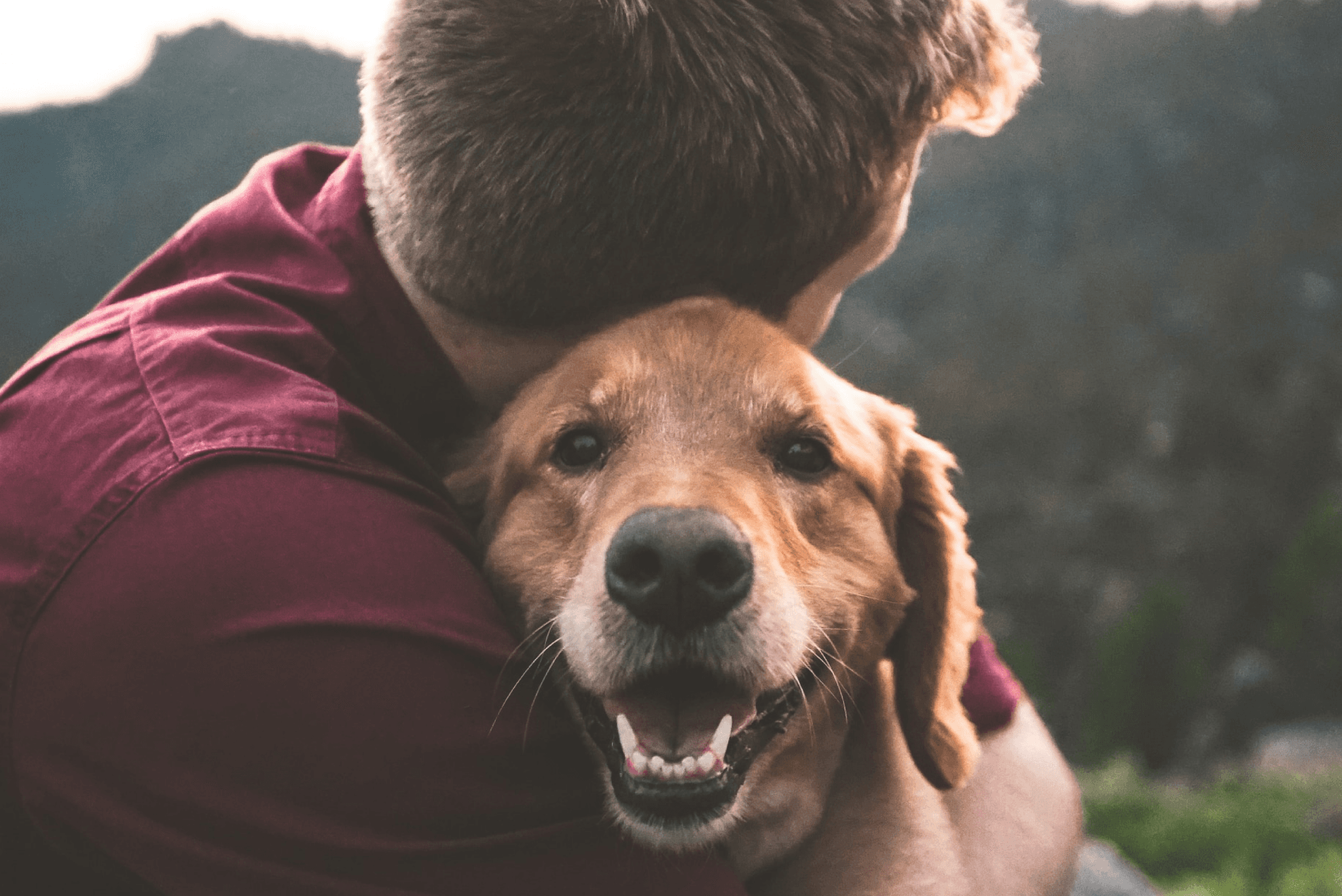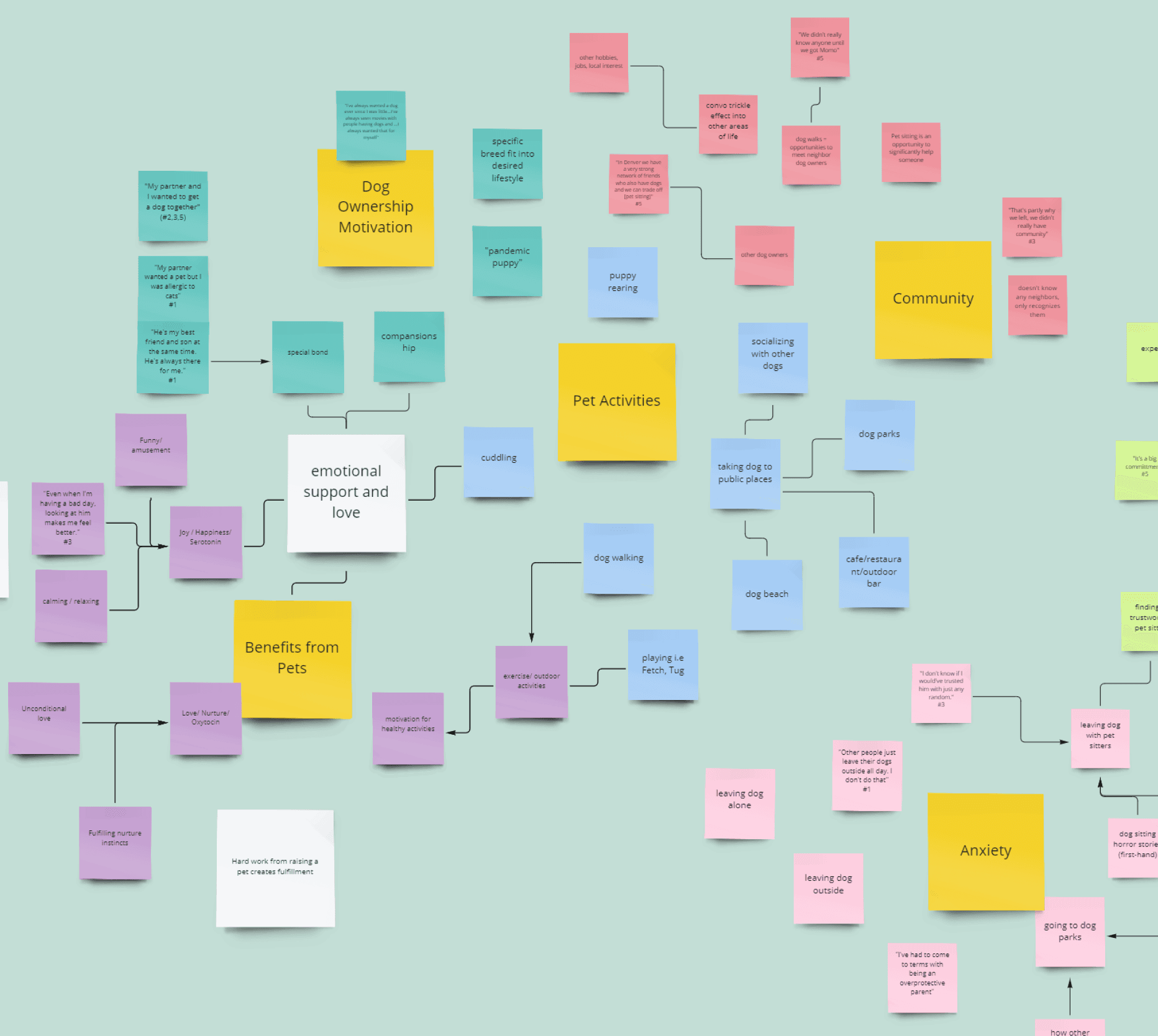Helping Pet Owners Foster Trusting Relationships with Pet Sitters
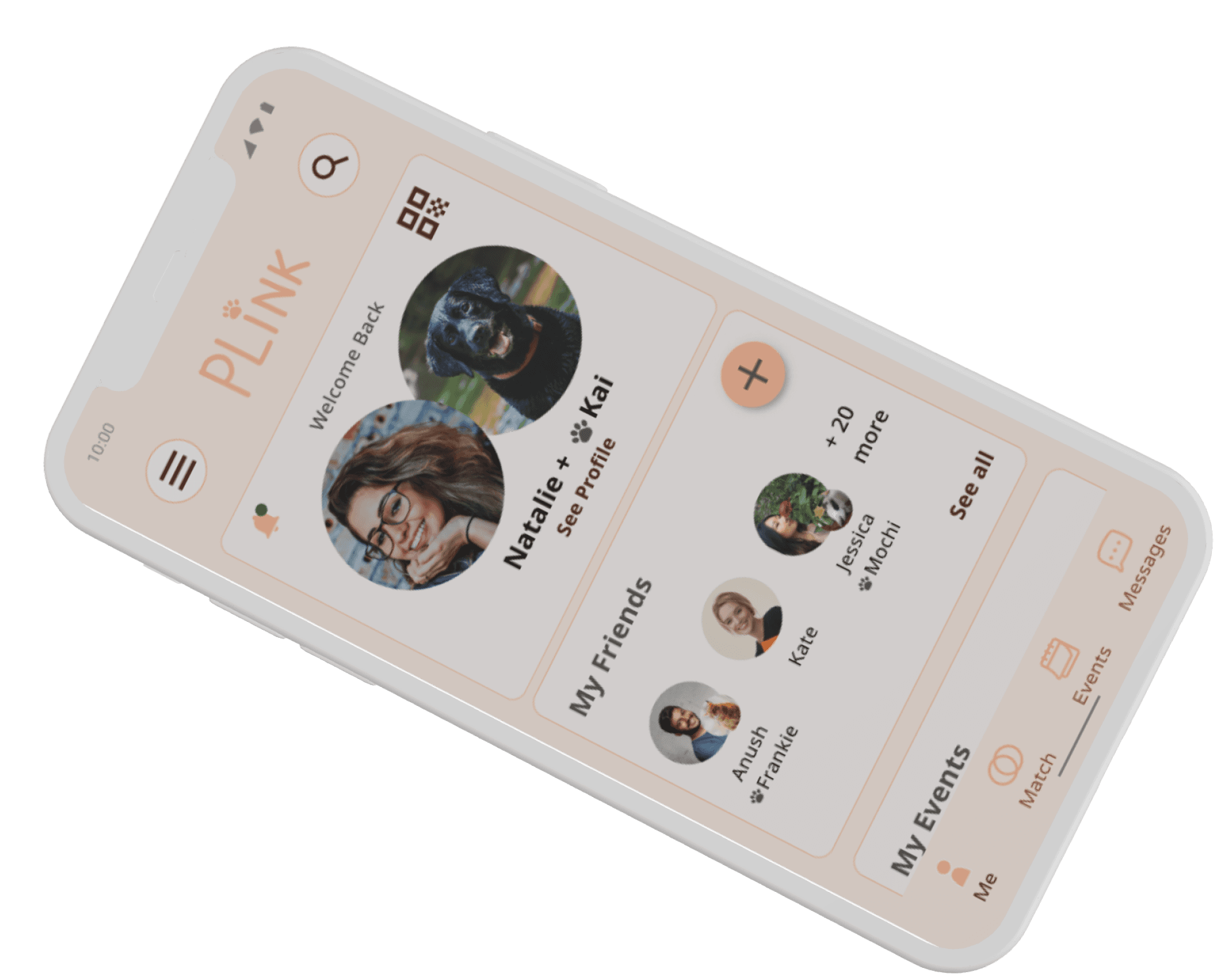

Role
Project Scope
Duration
Industry
Product Owner, Researcher, Designer
Problem space identification and exploration | Concept creation | Solution creation & implementation
1 year, 2022-2023
Civic Engagement, Pet Husbandry, and Social Media
Start
I wanted to bring two of my biggest passions, animals and health, into an exploration of a new problem space. My goal was to learn more about the human and animal bond and use my discoveries to create a solution that improves holistic well-being.
Through extensive research, I identified an area of opportunity to help pet owners with their pet care needs. Although services exist to help owners find sitters, owners still struggled to find someone that they trusted enough to use as a sitter. This led to less freedom with travel and day-to-day activities.
Design Journey Overview
Research
Design
Can we help people by involving animals? Why do animals help people?
App that provides customized opportunities to meet nearby pet lovers
Trust takes time to build. How might we help facilitate trust between pet owners & potential sitters?
Build a tool that helps owners make meaningful relationships connected through mutual love for pets
Pet owners love having pets but have anxiety around strangers pet sitting for them
Start
End
End
I designed an app that helps pet owners build a networrk of people that could be involved with their pet care needs, such as pet sitting. The app finds customized matches of people in the area who are looking for similar connections, and provides opportunities to meet in real life to spark genuine connections. With a more robust network of close-by pet friends, owners will have more trusted resources when it comes to searching for a pet sitter.
Research
Design
Initial Challenge: Can we help people in a health capacity by involving animals?
The first step was to learn more about Human Animal Interactions (HAI) and what effect animals had on human health. I started with reading scientific studies for reputable information and corroborated the secondary research with data of my own in the form of semi-structured interviews. Since the most available HAI was pet ownership, I decided to focus on interviewing pet owners and non-pet owners (whom I’ll refer to as “animal lovers”). Using the data gathered from my interviews, I constructed an affinity map to uncover insights, and used empathy mapping and personas to visualize the perspective of a pet owner and animal lover.
Significant Findings from Research Phase
Pets are positively correlated with improved physical, mental, and social health. Having strong social bonds is the number one most significant independent factor that affects one’s health
Because of how deeply owners love their pets, they worry about their pet’s wellbeing, especially regarding involving other people to pet sit for them.
Although pet sitter services exist, owners do not use them because they do not trust strangers to care for their pets. Instead, they rely on family and close friends to pet sit, which is an issue for those who do not live close to friends and family.
Contextual Interviews |
Empathy Mapping |
Affinity Mapping |
Personas |
HMW
See carousel below for more details
Main Problem
Pet owners do not have enough trusted contacts that are close by to use as pet sitters.
Research
Design
Ideating Solutions
Trust, like relationships, takes time to build. Given multiple interactions over time, people slowly test their trust in someone through exposure and learn about their personality, reliability, and values. Finding a pet sitter should be no different. Through User Stories, it became apparent that the current model of finding a pet sitter put a heavy burden on pet owners to acutely decide whether a stranger was trustworthy enough to be a pet sitter, which is difficult to do. I reimagined the process to follow a more organic timeline of relationship development.


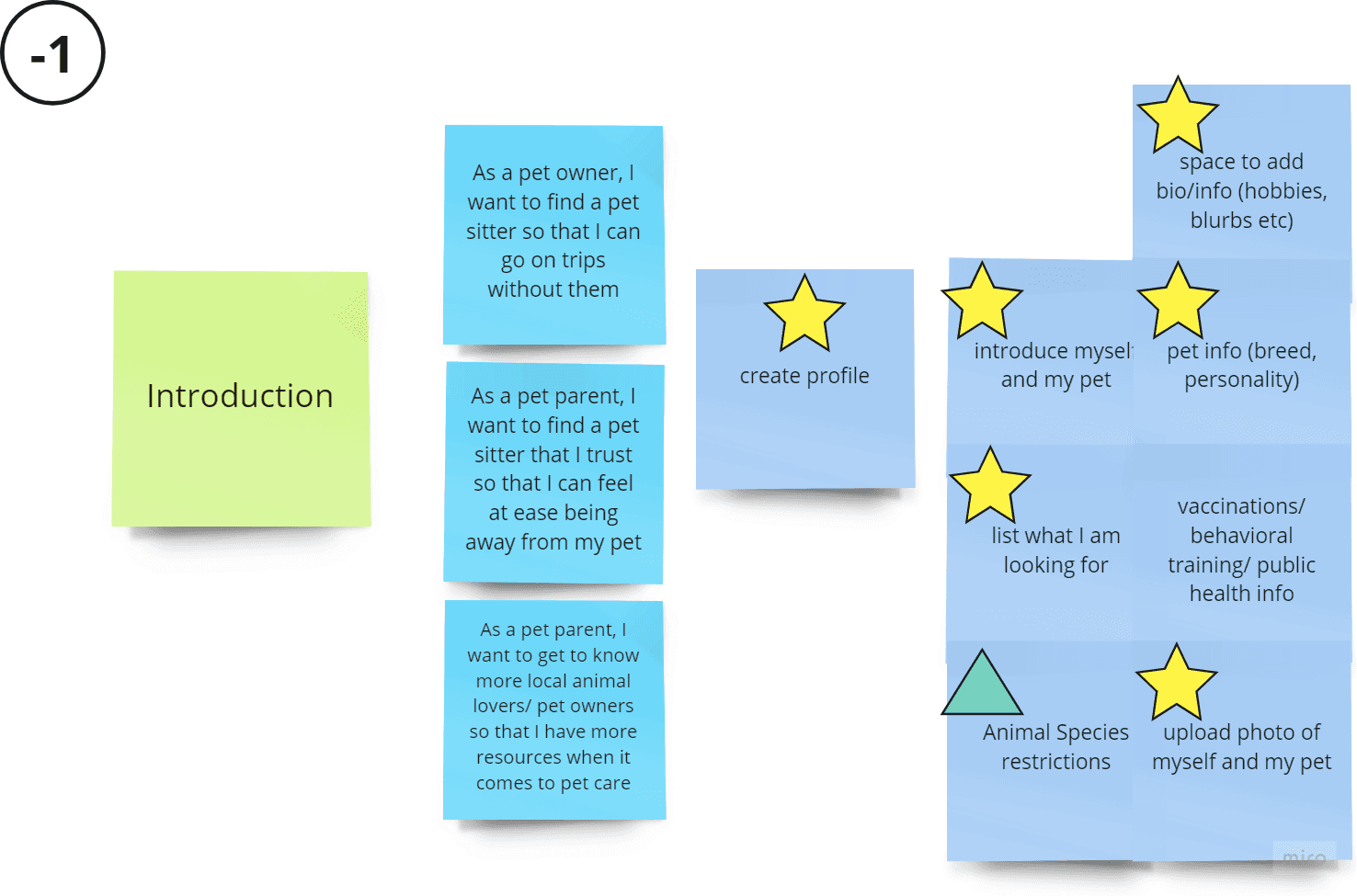
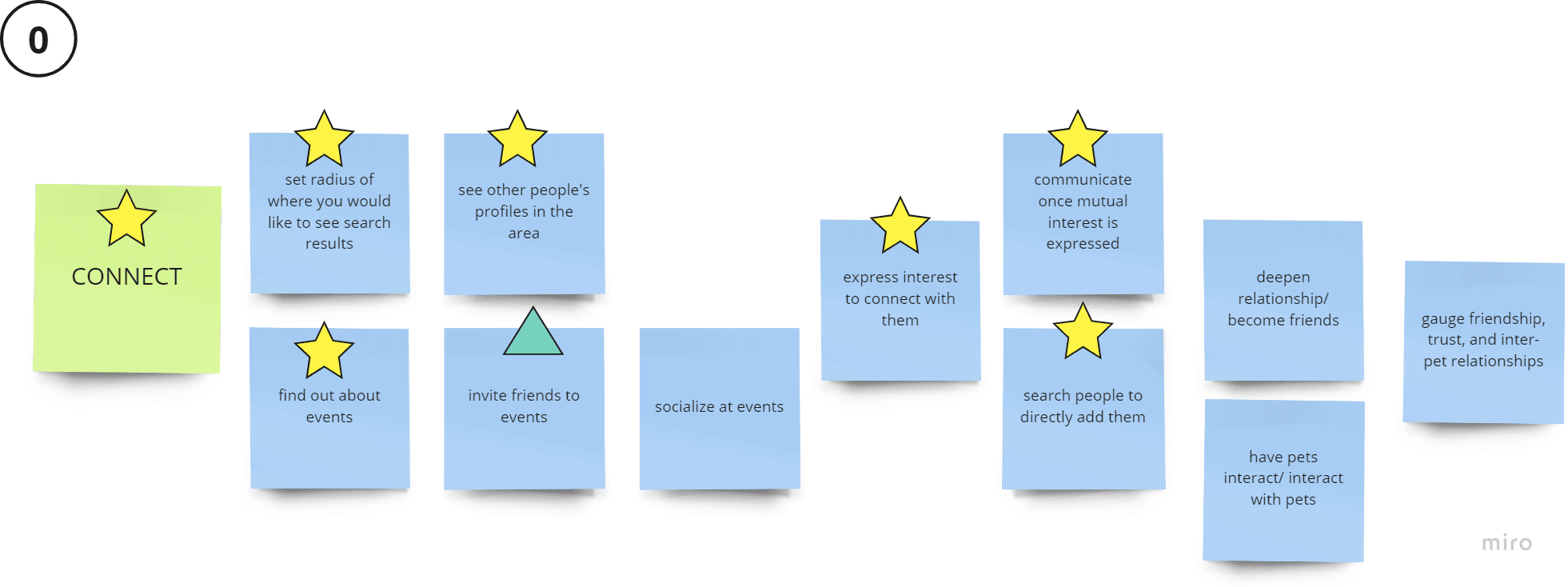
Before acute need for pet sitter
Spread out over
time = less pressure

Less to do now!
At acute need for pet sitter
Solution Concept
An app that helps pet owners grow a network of nearby friends and allows for organic interactions over time to develop friendship and trust. When it comes time to need a pet sitter, owners will intuitively know who they trust and would like to have pet sit for them.
Guerilla Testing Concepts
After fleshing out the structure and critical task flows of my design, I bombarded five strangers for a quick round of guerilla testing. Since I had specific questions I wanted answered, I chose to ask participants to complete well-defined tasks on a low-fidelity wireframe. I used the feedback I received to guide my design decisions for sketching and wireframing, turning the conceptual ideas into visualized frames
Sketches & Wireframes
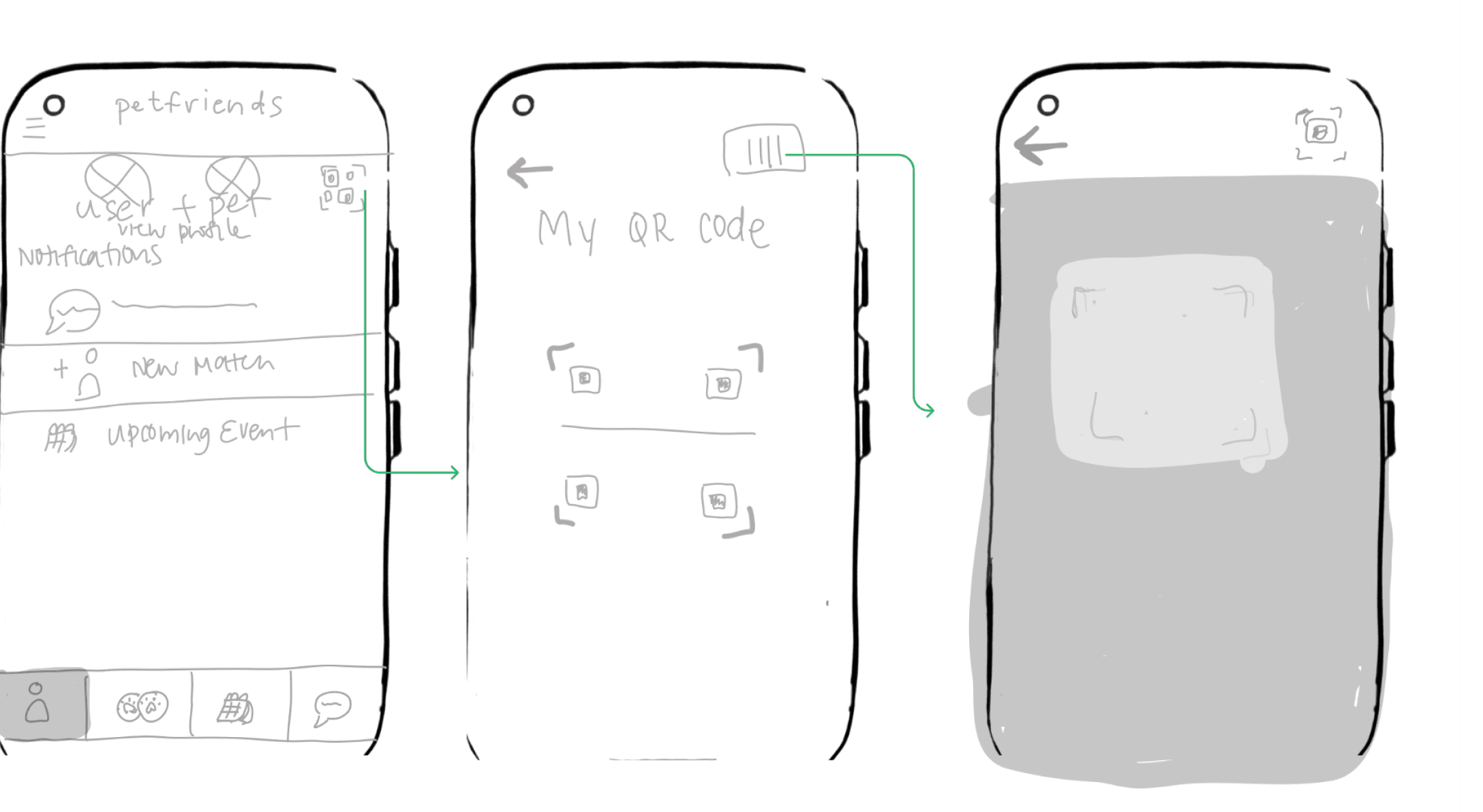




Branding & Style
“Plink” is a portmanteau of Pet and Link. The app’s goal is to help facilitate the creation of relationships and link pet lovers and owners in a local area. Plink is short, catchy, and has the potential to be used as an actionable verb (even though it’s not a recognized word as of now).
As a brand, Plink values social connections, kindness, and community. Three adjectives I used to personify Plink is Honest, Conscientious, and Friendly.
Colors |
UI Elements |
Typography
See Carousel below for more details
Prototype & Usability Testing
The high-fidelity prototype was put through two rounds of usability testing. In the first round, participants were given specific tasks following a script; the goal was to validate certain design choices and brand image feeling. After incorporating feedback from Round 1, a second round of usability tests was performed. This round was purposely defined loosely to allow for more exploration and opportunity to uncover new areas of interest.
Highlights from Usability Testing
100% of participants understood the app’s purpose. The top two adjectives used to describe the app’s feel were “friendly” and “fun.” 30% of participants commented that they liked the simplicity of the app.
In Round 1, about half of participants demonstrated difficulty using the Match feature. A tutorial was created and tested in Round 2, which resulted in a 100% success rate.
Overall there were minimal usability issues. Most of the participant’s complaints were for requests for additional features, such as filters and distance specifics.


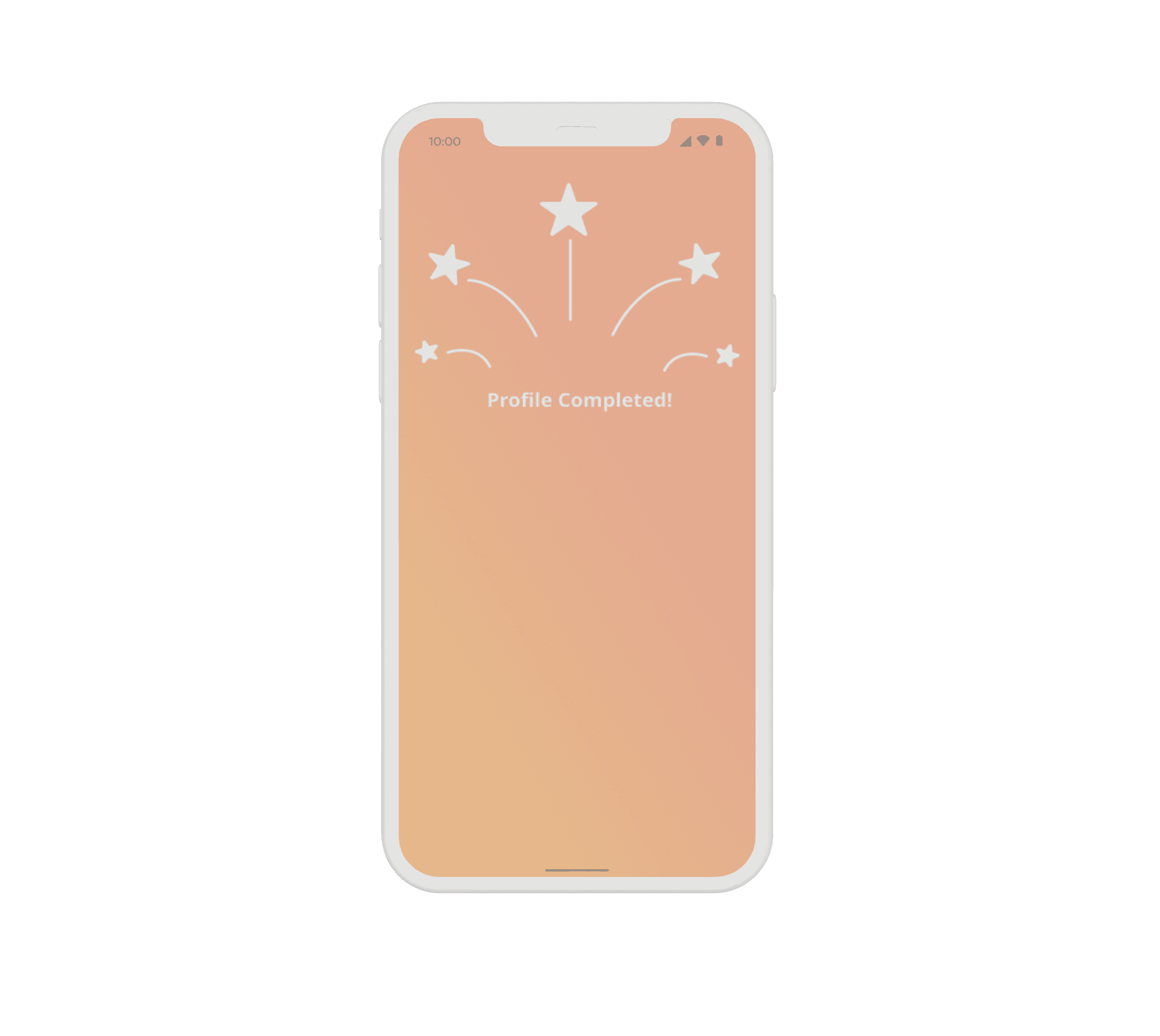


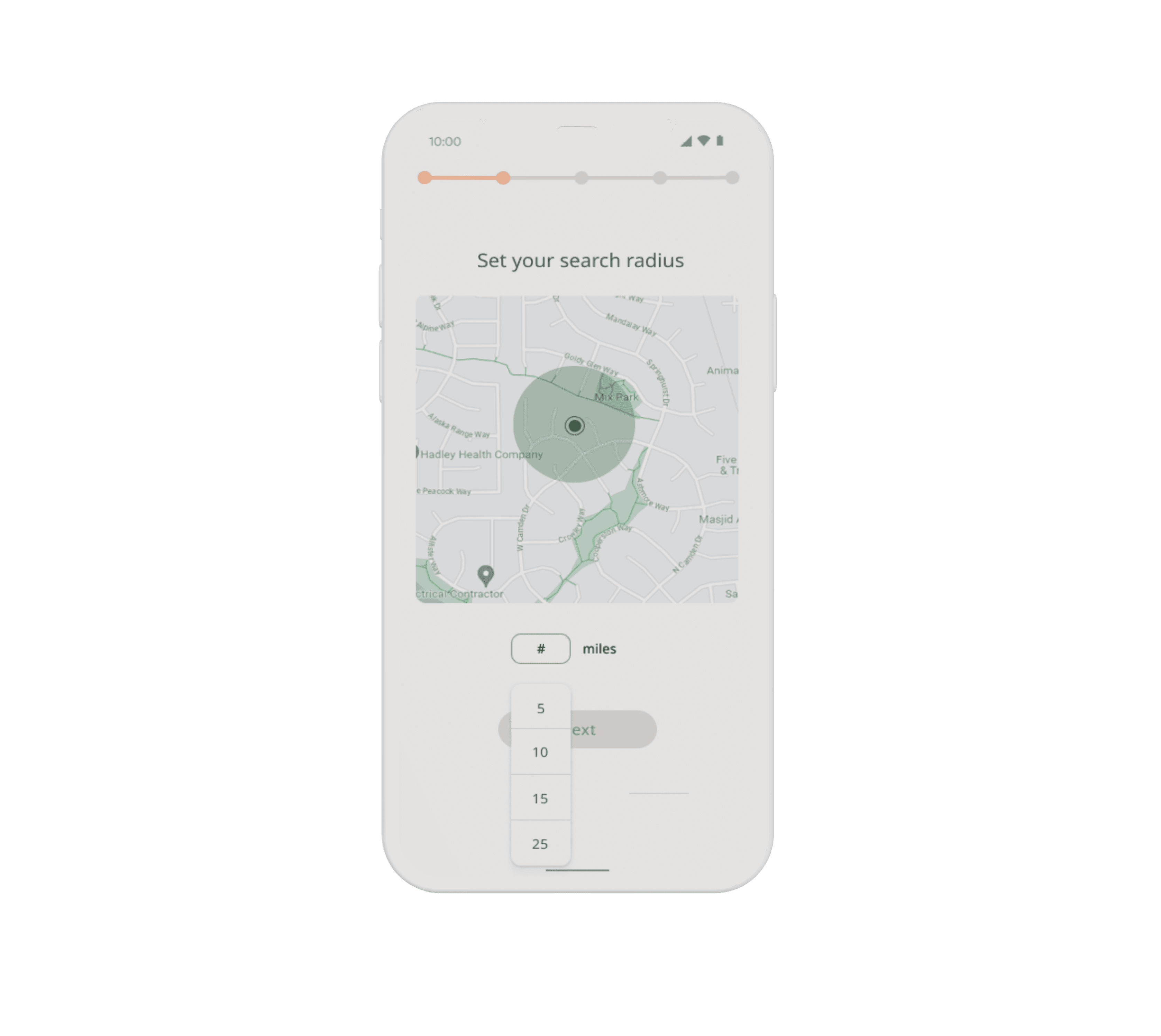



Reflection
I set out with the initial goal to include animals and health in the solution. Over the course of the design process, I took that solution space and honed it into Plink, an app that helps pet owners and animal lovers in the same vicinity connect over their mutual love for animals. Although I focused on the pet owner as my target user, I love that through my solution, animal lovers without pets can also be helped. It may very well be that the animal lover becomes the pet owner’s solution and both user’s collectively benefit and help each other. This is the best example of what community is and how animals can contribute to the making of said community.
Successes
Product usability and concept was successfully validated; there were no major usability issues that broke the app experience, and the responses about brand style matched intended goals.
“I wish this was a live product- I would totally use this right now.”
Challenges
Being a design team of one meant that I didn’t have teammates to bounce ideas and insights off meant more uncertainty, which led to slower project steps. Creating a product from scratch also meant no constraints were pre-defined, and I struggled with decision paralysis.
Future Steps
Future rounds of design and iteration can start with the data gathered from testing. Users expressed the desire for more features, such as distance visibility and filters for navigational ease. Also, I would like to investigate two topics uncovered during testing.
how users define and value “community”
the “dating” feel of app - is that a potential venture or a threat to the current app intent?
